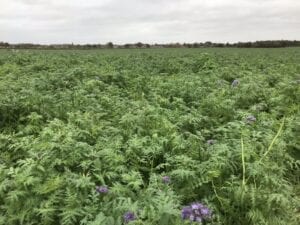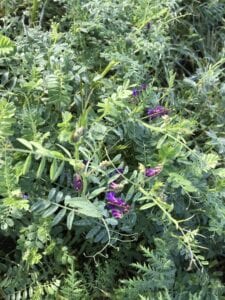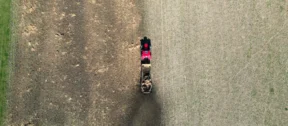With the onset of winter we welcome some woolly friends onto The Estate.

For the last six or seven year approximately 600 sheep who normally graze the parkland at Ickworth House have spend their winter months here at Rougham to get in tip top shape ready to lamb in the spring. When they are here at Rougham they are grazing cover crops which are sown on the arable land and are a mixture of rye, vetch and phacelia.
The cover crop is planted as soon as the cereal crop is harvested in autumn and is left to build up as much biomass as possible so that there is plenty of green vegetation for the sheep to eat. The sheep then arrive from the beginning of November and will continue to graze the cover crop until they have eaten all the vegetation, they are then moved onto another field or they move back to Ickworth ready to lamb. The sheep and the cover crop has become a really important part of our rotation and fills a gap between the cereal crop being harvested in the autumn and the sugar beet or potato crop being planted in the spring.
The cover crop provide a number of benefits; they help the soil microbes and bacteria by having something growing in it, the vetch fixes nitrogen from the atmosphere which helps our crops to grow and finally they add back important soil organic matter which helps with water retention in a drought and makes it easier to work the soil.

The sheep provide the ‘golden hoof’ effect which is like having a load of mowers and muck spreaders working across the field. They eat the crop and then the dung which comes out of the back of them gives back lots of fertility back to the soil. All of these factors mean that our soils are becoming healthier, more resilient and fertile which means that we don’t need to spread as much artificial fertiliser which can be very energy intensive to produce and we burn less diesel to cultivate the soil and our crops suffer less in a drought.
For the sheep they have just as many benefits for coming to Rougham. Their grass back at Ickworth has chance to put on some fresh growth ready for the spring, there is a break for worms and other parasites which affect the sheep so the sheep have healthier grazing and finally the cover crops are more nutritious than the grass is at this time of the year and so they are in better shape to give birth.
Over the years we have learned a lot and we are always trying to perfect what we do. Last year we introduced phacelia into the mix to provide a last splash of colour in the autumn and help any remaining pollinators. This year we have also placed out some bales of haylage made from grass and clover elsewhere on The Estate to keep the sheep going for longer.
The sheep will now be on The Estate until the end of February and it’s important that we give these pregnant ladies plenty of space and please keep your dogs on a lead when you are near them. Thank you











